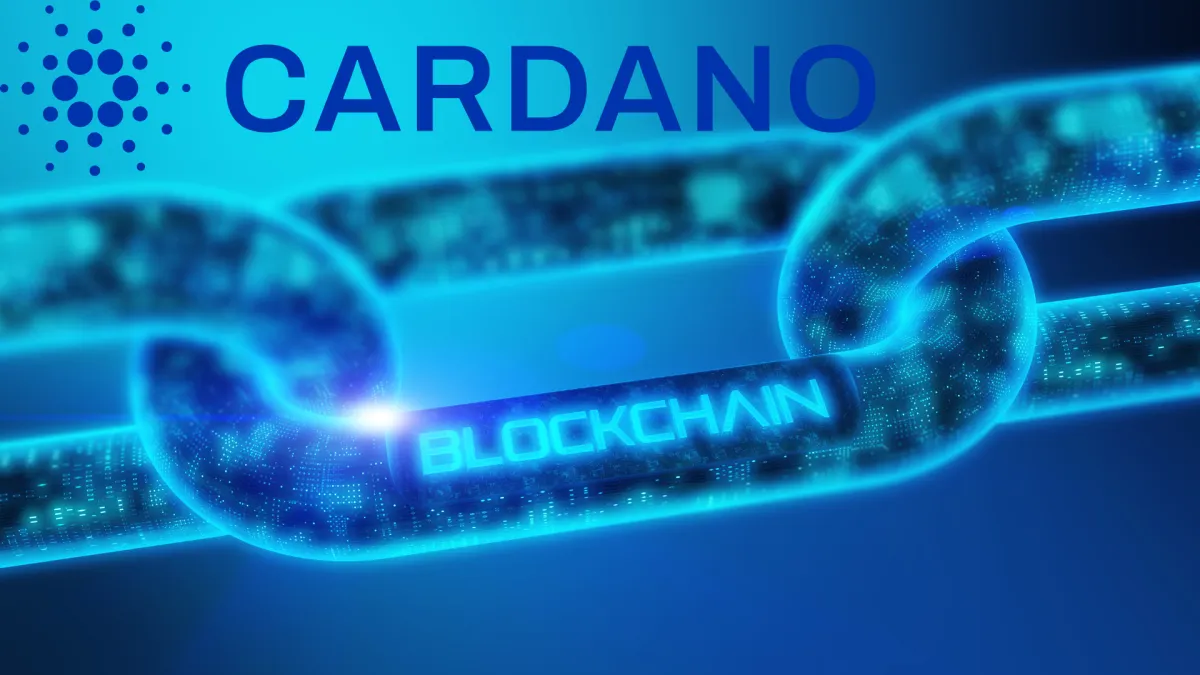— Inês Botelho
An Introduction to the Cardano Blockchain

Cardano is a layer 1 blockchain, similar to an operating system for a computer. It provides the foundational framework and rules that other applications and software operate upon. Just as an operating system manages how different programs interact and utilize resources, Cardano oversees transactions and processes within its blockchain network. As a third-generation blockchain, Cardano builds on the advancements of earlier blockchains like Bitcoin and Ethereum, while also addressing their limitations. This makes Cardano a more scalable, resilient, and versatile network, suitable for a wide range of applications, including supply chain management, finance, healthcare, and manufacturing.
How does Cardano work?
As a public, permissionless blockchain, Cardano is designed to be inclusive and accessible. This means that anyone can engage with the network—whether by validating transactions or developing applications—without needing prior authorization. Additionally, being permissionless means that there is no central authority controlling access, ensuring an open network.
While most public blockchains are also permissionless, some, like Ripple and Stellar, function as federated networks that rely on a council to grant explicit permissions. Thus, while all permissionless blockchains are public, not all public blockchains are permissionless.
Layer 1 blockchains, including Cardano, can experience congestion, which may slow transaction speeds. In some cases, as seen with Ethereum, this congestion can lead to higher transaction fees. To address these issues and enhance scalability, sidechains and layer 2 solutions are used. Cardano is well-suited for integrating sidechains to support extended scalability.
Layer 2 solutions and sidechains work as additional layers on the main blockchain, managing transactions off-chain to improve speed and reduce costs. However, layer 2 solutions rely on the main blockchain’s security, while sidechains typically operate with their own set of rules and guarantees. Together, these scaling solutions, combined with Cardano’s public blockchain infrastructure, offer a robust and efficient framework for decentralized applications (DApps) and transactions.
Cardano's unique infrastructure provides specific advantages for both enterprises and newcomers. Understanding its proof-of-stake (PoS) consensus mechanism and the role of its native cryptocurrency, ADA, offers a solid foundation for exploring how Cardano manages native assets, smart contracts, DApp development, and supports a diverse range of use cases across various industries.
Achieving Consensus on Cardano
Blockchain consensus is the process of agreeing on the sequence of transactions and the overall state of the network. Think of it as a group effort to maintain a record of digital transactions, where participants adhere to a set of rules known as a consensus protocol.
Each participant contributes resources to the network. Some consensus mechanisms rely on computational power, while others might use storage, space, or even seniority. These combined resources help secure data records and ensure consensus on valid transactions.
In a proof-of-work system, miners with more computational power have a higher chance of solving a complex mathematical puzzle first and thus mining the next block. This effort is rewarded with cryptocurrency.
Conversely, in a proof-of-stake system, the likelihood of minting the next block depends on the number of tokens a participant controls and stakes. While ada holders typically use their tokens for payments, transaction fees, and interacting with DApps on Cardano, staking in the proof-of-stake protocol is primarily for network governance and security, with the added benefit of potential rewards. By staking ada, users delegate their block production and transaction endorsement rights to stake pool operators (SPOs), earning rewards similar to interest on a savings account.
Cardano uses a lottery system called slot leadership to determine who will produce the next block. A stake pool with more ada has better chances of being chosen to create a block and earn rewards. Cardano employs the Ouroboros family of protocols as its proof-of-stake mechanism, ensuring secure and decentralized consensus.
ADVERTISEMENT
ADVERTISEMENT
ADVERTISEMENT

ADVERTISEMENT
ADVERTISEMENT
ADVERTISEMENT
The role of cryptocurrency on the Cardano blockchain
As previously mentioned, the delegation and staking of ada are essential for creating new blocks, which in turn supports the various functions of the blockchain.
Delegating to a stake pool is straightforward and doesn't require extensive technical knowledge. It allows users to earn rewards based on the amount of ada they stake. A stake pool operates like a collective savings account for cryptocurrency holders, such as ada. Rather than managing their assets individually, participants combine their stakes.
Stake pool operators (SPOs) oversee these pooled resources, which are crucial to Cardano's decentralized network.
They handle the necessary hardware and software to validate transactions, ensuring their accuracy and security.
Why stake on Cardano?
The advantage of staking on Cardano lies in its flexibility. Holders maintain complete, non-custodial control of their ada, while liquid staking allows for smooth asset transfers between stakeholders during delegation. There are no lock-up periods, so users can withdraw their stake at any time without facing penalties, and rewards are not reduced due to the actions of an SPO.
In contrast, other blockchains use slashing as a penalty for validators who engage in malicious or negligent behavior, such as double signing or prolonged inactivity, by partially or fully confiscating their staked funds. Cardano employs different security measures, including SPO pledges, strong operational resilience, and a high degree of decentralization, to safeguard its network.
Cardano consistently performs well in terms of staking ratio and minimum attack vector (MAV). The staking ratio reflects the participation level of ada holders in delegating their funds and is directly related to decentralization. This, in turn, increases the number of entities maintaining the network, enhancing its security. Cardano’s MAV is significantly higher than that of other proof-of-stake chains, with over 3,000 registered stake pools contributing to its diverse and decentralized network.
Cardano’s transaction model
Most blockchains, or blockchain protocols, utilize one of two main transaction models: the unspent transaction output (UTxO) model or the account-based model.
The UTxO model, originally introduced by Bitcoin, tracks individual units of cryptocurrency as distinct entries in a ledger. Each transaction references specific ledger entries, ensuring accurate and transparent tracking of funds.
Cardano enhances this model with its extended unspent transaction output (EUTxO) approach, which adds extra data to each ledger entry. This enhancement allows smart contracts to function as self-executing agreements with predefined conditions, such as automated escrow services. By referencing specific ledger entries, these contracts ensure predictable outcomes, reducing the risk of unexpected issues.
In contrast, Ethereum's account-based model resembles a traditional bank account, where each user has a running balance. This model continually updates and displays the entire state of the blockchain, including account balances and smart contract data, to the public.
While this interconnectedness offers flexibility for developers, it also introduces potential vulnerabilities. Cardano’s EUTxO model, however, uses deterministic transaction validation and isolates smart contracts to minimize the risk of errors or malicious attacks. While the account-based model emphasizes adaptability, Cardano’s EUTxO model prioritizes security, transparency, and reliability, making it a strong platform for enterprise applications and situations requiring high levels of trust and risk management.
Native assets on Cardano
The architectural differences between Cardano's EUTxO model and Ethereum's account-based model extend beyond basic transactions to how each platform manages non-fungible tokens (NFTs), native tokens, and other digital assets. These differences profoundly affect the creation, management, and security of these assets on their respective networks.
Cardano treats tokens as native assets, which means users can interact with custom assets directly on the blockchain without needing smart contracts. This allows Cardano users to send, receive, and exchange these tokens seamlessly and efficiently.
In contrast, Ethereum relies on smart contracts for managing custom tokens, which adds complexity, cost, and potential security risks due to repetitive coding. Even simpler blockchains like Bitcoin, which do not support advanced smart contracts, face challenges with custom tokens because they depend on layer 2 solutions, introducing additional complexity. Consequently, Cardano’s native asset model provides a more straightforward and scalable solution, making it an appealing choice for enterprises and developers looking for cost-effective and efficient tokenization options.












